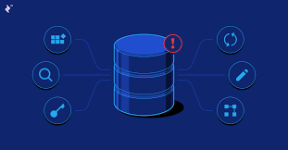Understanding Computer Databases: The Foundation of Modern Data Management
In the digital age, data has become the most valuable asset for individuals, organizations, and governments. Every click, transaction, and interaction generates data, and managing this data efficiently is a major priority. At the heart of this data management lies a powerful tool called a computer database. Whether you're shopping online, using a mobile app, or logging into a social media platform, you're interacting with a database.
This article explores what computer databases are, their types, components, benefits, applications, and future trends.
What is a Computer Database?
A computer database is an organized collection of data that is stored and accessed electronically. It is designed to efficiently store, retrieve, and manage large amounts of information. A database allows users to add, modify, delete, and retrieve data with ease.
Databases are essential because they provide a structured way to store information, making it easier to access and use. Imagine trying to find a specific file from a messy room full of papers — databases help organize that mess so you can find exactly what you need, quickly and reliably.
Key Components of a Database
A computer database consists of several key components:
- Data: The actual information stored, such as names, numbers, images, or documents.
- Database Management System (DBMS): Software that allows users to interact with the database. Examples include MySQL, Oracle, PostgreSQL, and Microsoft SQL Server.
- Schemas: The structure or design of the database that defines how data is organized.
- Tables: The basic unit in which data is stored, with rows (records) and columns (fields).
- Queries: Commands used to retrieve or manipulate data (usually written in SQL).
- Reports and Dashboards: Used to present data in a user-friendly format.
Types of Computer Databases
There are various types of databases, depending on how data is stored and used:
1.
- Store data in tables with relationships between them.
- Use Structured Query Language (SQL) for managing data.
- Very common in business and enterprise systems.
- Examples: MySQL, Oracle, PostgreSQL, Microsoft SQL Server.
2.
- Designed to handle unstructured or semi-structured data.
- Do not use tables and are ideal for big data and real-time web applications.
- Types include document databases (like MongoDB), key-value stores, and graph databases.
- Examples: MongoDB, Cassandra, Redis.
3.
- Hosted on cloud platforms, offering scalability and remote access.
- Pay-as-you-go pricing and automatic backups.
- Examples: Amazon RDS, Google Cloud SQL, Microsoft Azure SQL.
4.
- Data is stored across multiple physical locations or servers.
- Helps in high availability and fault tolerance.
5.
- Store data in the form of objects, similar to programming languages like Java and C++.
Importance and Benefits of Using Databases
Databases are crucial for several reasons:
- Efficiency: Speeds up data storage and retrieval.
- Accuracy: Minimizes errors by enforcing data integrity.
- Security: Controls access to data and protects against unauthorized use.
- Scalability: Easily handles growing amounts of data.
- Backup and Recovery: Enables restoring data in case of failure.
- Data Sharing: Multiple users can access data simultaneously in real time.
Applications of Computer Databases
Databases are used in almost every industry:
- Banking: For storing customer records, transactions, and account details.
- E-commerce: Managing product inventory, customer information, and order history.
- Healthcare: Patient records, treatment history, and medical billing.
- Education: Student information systems, course management, and research data.
- Government: Citizen databases, tax records, and public services.
- Social Media: Storing user profiles, messages, likes, and shared content.
- Telecommunications: Call records, billing, and customer relationship management.
Structured Query Language (SQL)
SQL is the standard language for interacting with relational databases. It allows users to:
- Create and modify tables.
- Insert, update, and delete data.
- Retrieve specific information using queries.
- Manage user permissions and security.
Example SQL Query:
sql
CopyEdit
<span><span><span>SELECT</span></span><span> name, age </span><span><span>FROM</span></span><span> students </span><span><span>WHERE</span></span><span> age </span><span><span>></span></span><span> </span><span><span>18</span></span><span>;<br></span></span>
This retrieves names and ages of students who are older than 18.
Challenges in Database Management
Despite their advantages, databases come with certain challenges:
- Data Breaches: Sensitive data can be targeted by hackers.
- Data Redundancy: Duplicate data may lead to inconsistency.
- Maintenance Costs: Requires regular backups, updates, and skilled professionals.
- Complexity: Designing an efficient database system can be complicated.
Future of Databases
As technology evolves, so do databases. Some emerging trends include:
- Artificial Intelligence (AI) in DBMS: Automating data analysis and optimization.
- Blockchain Databases: Secure and decentralized data storage.
- In-Memory Databases: Faster processing by storing data in RAM instead of disks.
- Edge Databases: Designed for IoT devices and edge computing.
- Self-Healing Databases: Can fix common issues without human intervention.
Conclusion
Computer databases have become the backbone of the information era. From storing customer data to managing complex scientific research, databases play a vital role in making sense of the vast amounts of data we generate daily. Understanding how databases work and their practical applications is not only useful for IT professionals but also for anyone who interacts with digital systems. As we move into a more data-driven future, the importance of reliable, secure, and efficient database systems will only continue to grow.

